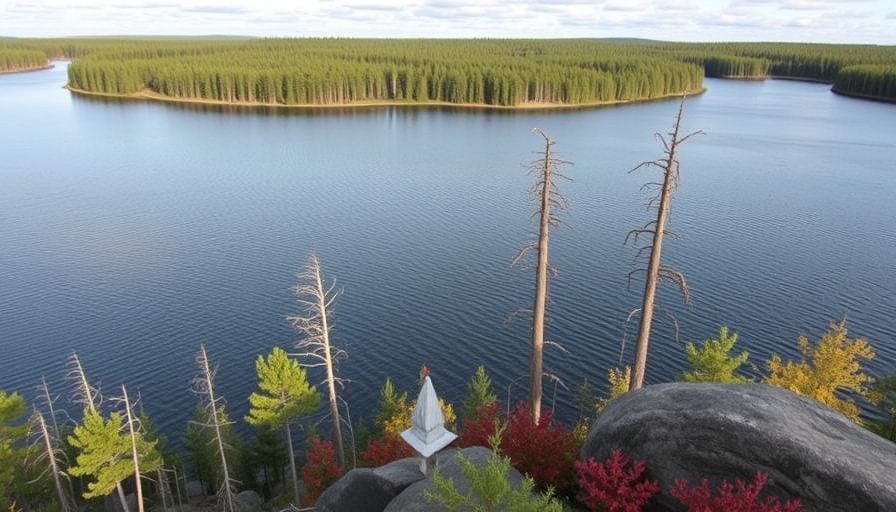
Understanding the Threat to Minnesota's Pristine Wilderness
Deep within Minnesota lies the Boundary Waters Canoe Area Wilderness, an awe-inspiring 1.1 million acres of untouched nature. Known for its pristine waters and abundant wildlife, this sanctuary is now faced with a looming environmental crisis due to a little-known provision in Donald Trump's proposed legislation. Critics argue that the bill could pave the way for foreign mining interests to pollute one of America’s last untouched wilderness areas.
What’s at Stake: The Boundary Waters' Unique Beauty
First designated as a protected area in 1964, the Boundary Waters is a cherished location not only for its stunning canvases of forests and lakes but also for its ecological significance. As the only large-scale protected sub-boreal forest in the contiguous United States, it supports a rich tapestry of wildlife, including wolves, moose, loons, and bears. Each year, nearly 150,000 visitors flock to the region for canoeing, fishing, and camping, helping to contribute $13.5 billion to Minnesota’s outdoor recreation economy. However, this unique environment also sits atop mineral-rich lands, attracting unwanted attention from companies eager to mine its resources.
The Mining Controversy: Who Benefits?
The bill, dubbed Trump’s “Big, Beautiful Bill,” includes a provision that would effectively hand over public land near the Boundary Waters to Twin Metals Minnesota, a subsidiary of the Chilean mining giant Antofagasta. Environmental activists warn this decision could result in severe pollution through acid drainage into the watershed that feeds these pristine lakes and rivers, forever altering the landscape.
The Voices of Conservation: A Collective Call to Action
Advocates for the Boundary Waters, such as Becky Rom of Save the Boundary Waters, argue vehemently against the proposed mining operations. Rom states, "This is a giveaway of critical and sensitive federal public land forever to a single mining company," emphasizing the long-term ramifications of such decisions. Campaigns to protect the wilderness area have gained momentum, especially in light of the Biden administration’s recent efforts to roll back mining permits that previously threatened the region's integrity.
Broader Implications of Public Land Management
The Boundary Waters situation is not just an isolated case; it highlights the ongoing struggle over public land management across the United States. As the government navigates through differing perspectives on natural resource exploitation, the voices of conservationists have become increasingly important. Recent successful protests against land sell-offs indicate that public land advocates can leverage powerful grassroots movements to bolster their causes.
How You Can Help: Get Involved in Conservation Efforts
For those who care about preserving America’s natural treasures, there are many ways to lend support. Joining organizations like Save the Boundary Waters or participating in local clean-up events can make a tangible difference. Additionally, concerned individuals can contact their elected representatives to voice their opposition to potentially harmful mining operations. Sharing knowledge of these issues with friends and family can also raise awareness, keeping the conversation alive.
Conclusion: Safeguarding Our Natural Heritage
The Boundary Waters Canoe Area Wilderness stands as a testament to the beauty of preserved nature in the US. However, it is at a critical juncture; the decisions made in Washington could either protect it for future generations or throw it open to damaging exploitation. Therefore, individuals interested in home and property investments should pay attention to the environmental implications of such policies. A healthy, clean environment is not just a matter of conservation—it's vital for property values, community well-being, and sustainable living for all. To stay engaged in these crucial dialogues and safeguard areas like the Boundary Waters, it's crucial to turn awareness into action.
 Add Row
Add Row  Add
Add 





Write A Comment